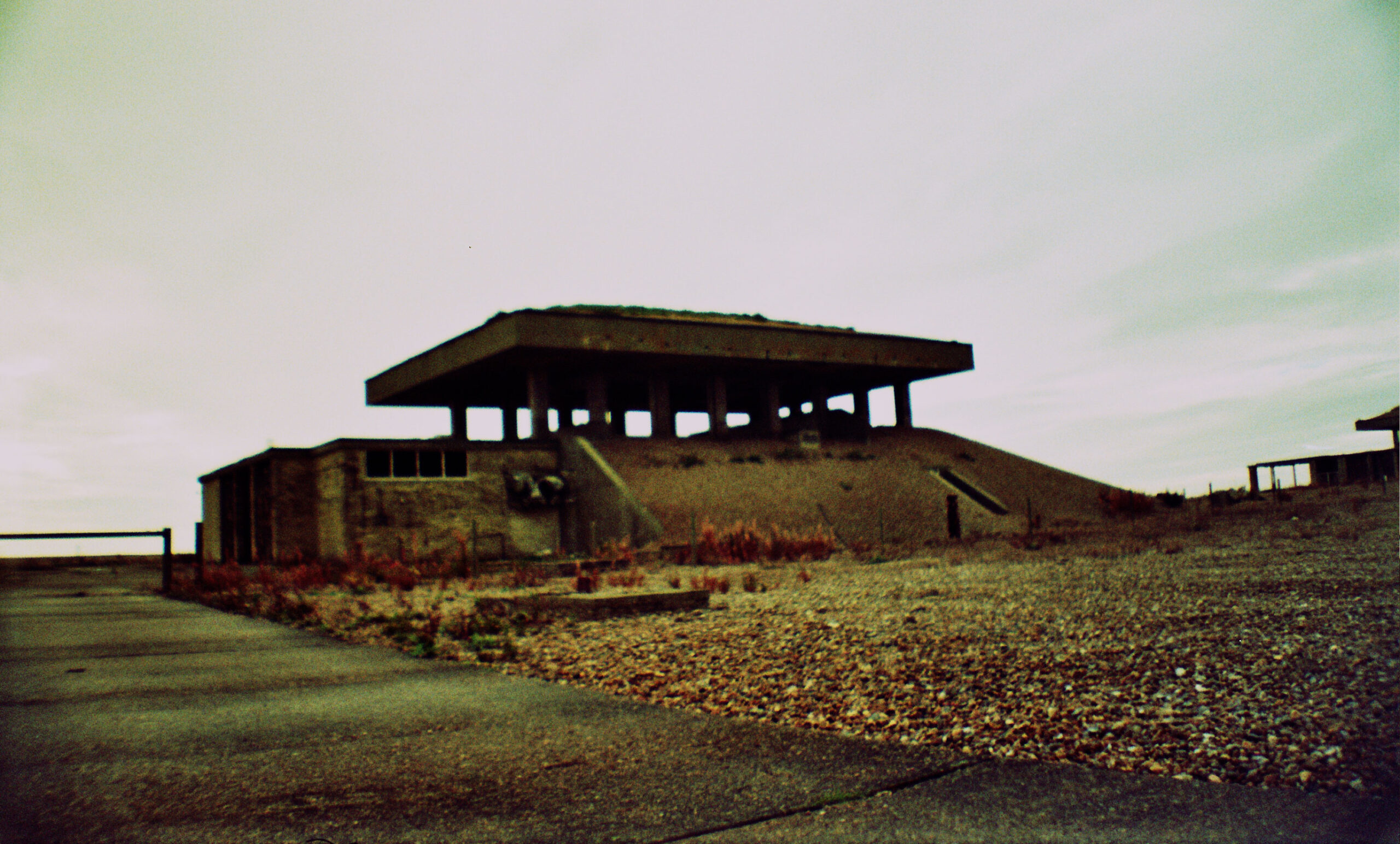We are living in J.G. Ballard’s world, that much is clear. So precise were Ballard’s not-so-future predictions that it is beyond cliché to link our current political, technological, architectural and even social states to the man’s writing. But, outside of his great 1970s social-dystopias and his morbid retail-park nightmares of the millennial period, Ballard’s shorter writing has just as much to say about our time as his more famous novels. This may be because we have moved on so very little from the period of Ballard’s most popular writing but it fails to lessen the effect of reading his work; forever inducing a look up from the page just to check that he’s not still about, somehow taking notes as the world beyond merges with his words. This feeling occurred for me most powerfully a few years back, not in front of a London high-rise or in the cavern underneath a motorway as is to be expected, but whilst visiting the ex-weapons testing facility of Orford Ness in Suffolk. Equally, it was not a novel of Ballard’s that had given rise to this feeling but a short story of his written in 1964; the strangely melancholic The Terminal Beach.
Ballard’s story is both tragic and surprisingly emotional, far from his more typical laboratory approach to character. It concerns a lonely man, Travern, who takes refuge on the nuclear testing island of Eniwetok after the death of his wife and son. Similarly to a number of his novels, the story links the decline of the environment to the character’s mental state; the nuclear fallout from various tests suffered by the landscape decaying equally alongside Travern’s inner state. Ballard seems to psychoanalyse his character, not through some deep probing of his past, but by giving a segmented tour of the island and the carcass of its facilities. Travern is equally rooting around in his own cracked mind as he is around the smashed concrete. He even hides from a naval search party who seem to represent everything in humanity that he can longer bear. Solitude in the ruins is better than the companionship of the children of the atom.
The Terminal Beach is in itself a nuclear ghost story. Travern sees visions of his deceased loved ones seeming to get closer to his new, edgeland territory as he disintegrates. They watch him from the dunes , drifting nearer as he reaches a critical mass of instability. He sits patiently waiting for them to speak but there are no voices left in this world, a world scarred by the continued belief in the justification of nuclear weapons. The ghosts of many atrocities alight into the text, almost cathartically like silent screams of the calamities barely twenty years old at the time of Ballard’s writing. Perhaps this is why, like so much of the writer’s work, The Terminal Beach has aged so well. It isn’t simply because the threat of a nuclear holocaust is still conceivable (and seems to have found a new early warning system today in the surprising form of Twitter) but because there’s an anticipation to the narrative, an acceptance that the testing of such weapons suggests their potential use. The island in reality was, after all, a heavy testing site for America who eventually planted a huge concrete deposit there for nuclear debris. It is a genuine concrete island, far more disturbing than Ballard’s actual Concrete Island, that strange edgeland under the Westway from his 1974 novel.
My day at the National Trust terminal beach in Suffolk still stirs my thoughts with both inspiration and fear, a filming trip to visit this strange coastal zone engraving itself onto my mind’s eye. The writer, Robert Macfarlane, had helped organise access to some of the famous laboratories, described by W.G. Sebald in The Rings Of Saturn as resembling pagodas and where Sebald imagined himself “amidst the remains of our own civilization after its extinction in some future catastrophe.” The warden drove us into the heart of this zone on a small, electric cart straight out of a science-fiction film. The battered mesh fences, shingle pathways and marshland blurred together as my knuckles turned white from holding on. In an essay for The Guardian, Robert describes Orford Ness as “a dreamscape co-designed by MR James, JG Ballard and Andrei Tarkovsky.” The Ballardian element referenced here is undoubtedly a nod to The Terminal Beach, the aesthetic likeness between the two being uncanny.
As Ballard writes in the story “The series of weapons tests had fused the sand in layers, and the pseudogeological strata condensed the brief epochs, microseconds in duration, of thermonuclear time.” There is more than a passing likeness here, even if Orford Ness was only officially the site for testing the firing mechanisms of nuclear weapons. Most importantly, walking and filming around Orford Ness created the same feeling as reading Ballard’s story, that of a temporal overlap like receding and incoming tides briefly meeting to create a vortex. The past was here, haunting with the clanking chains of our Cold War paranoia. But, if we were unlucky, so I thought, so was our future too.
Written by Adam Scovell, PhD candidate, Goldsmiths University. Visit his website here.
Find ‘The Terminal Beach’ in The Complete Short Stories Volume 2. Buy your copy here.
If you enjoyed this, try:
- Cover Reveal: High-Rise by J. G. Ballard
- Myths of the Near Future: Writers and Publishers on Ballard
- Four Dimensional Nightmare: David Pelham on Designing Ballard






4thestatebooks